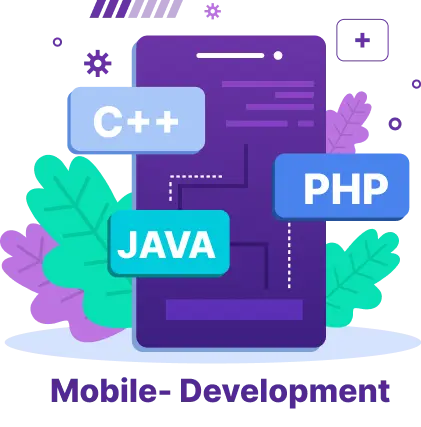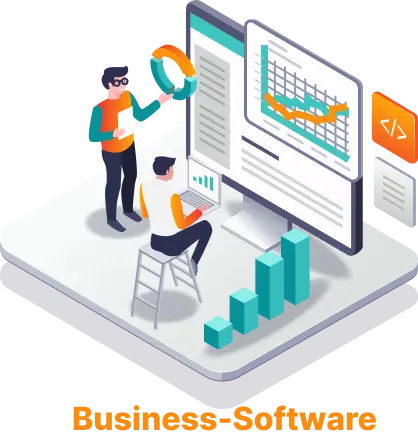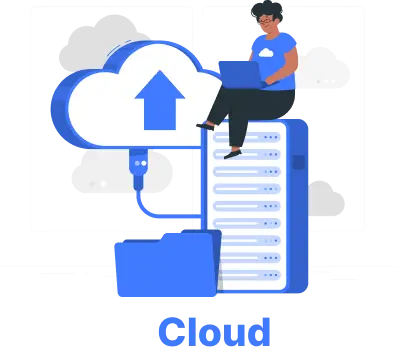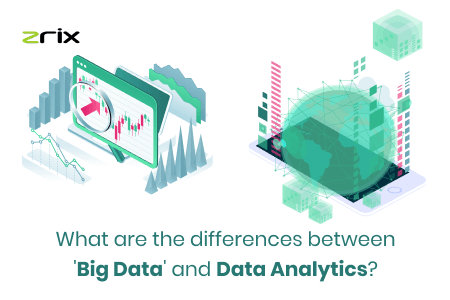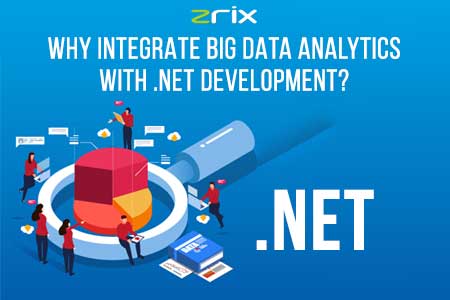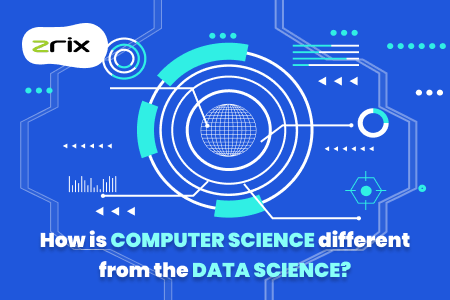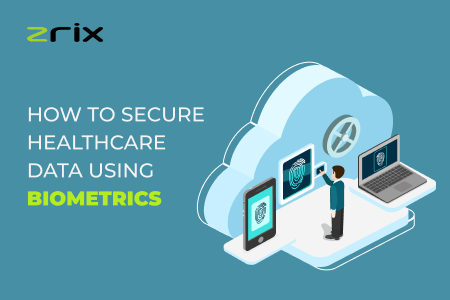What Are The Key Difference You Should Know in Big Data vs Data Science?
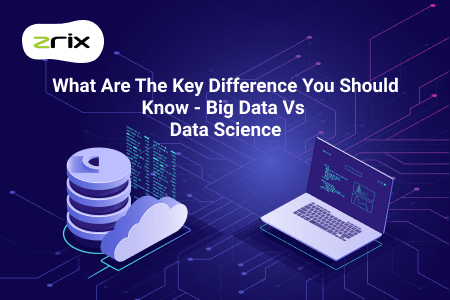
Digital Data is everywhere and with each new internet-enabled device, the amount of data is growing increasingly. According to Forbes, currently, 1.7 megabytes of new data are coming up every second and this will double by 2022!
Data is already transforming our lifestyle, is bringing people of the world closer. The more collection, storage, and studies on the are happening and is taking the world into other advancements may be to - Data Revolution!
Right now the most important thing is to clearly understand the scope of work related to the Data industry. And when we talk about this, the first thing to hit is Big Data vs Data Science.
Here, we will compare big data and data science to know which one is better professionally!
Quick Navigation
Whenever we get to talk about data, first we get amazed by the large amount of data that is getting produced; second, how it is being arranged. Extracting useful and required information from datasets is the work of Big Data while converting data into readable information is Data Science.
Basically, Big Data and Data Science both contribute to analyze the data for obtaining the best insights. Looking into the insights is really important if you want to prepare a new product for your customers.
For this, you need to understand
Big Data vs Data Science: How They Work?
Big Data means that humongous volumes of data which can't be handled successfully by us with the customary applications existing today. The preparation of Big Data starts with the raw information that comes from us while we surf the internet.
This so-called big data is quite difficult to store in the memory of a solitary PC!
A large amount of data incorporates Unstructured data, Semi-organized data, and Structured data. Consequently, all information and data independent of its type and format can be piled up together to form big data from various sources.
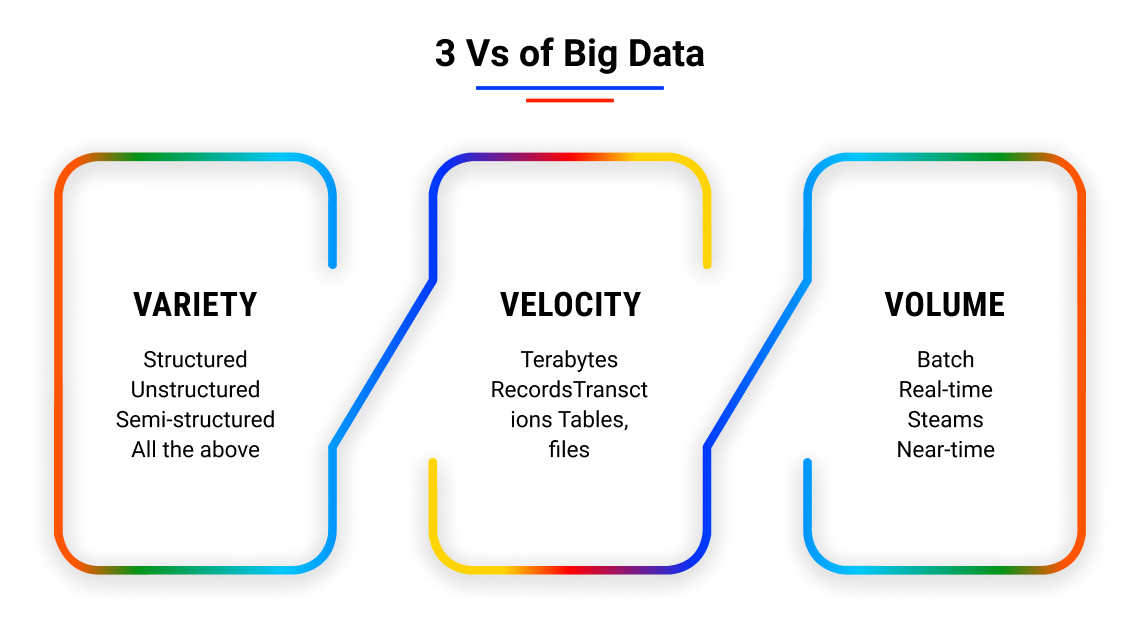
Data Science is the superset of big data. Also, data science is a combination of statistics, mathematics, programming, problem-solving, data collection, data screening, data cleansing, preparing, and data aligning.
Managing structured and structured data is the first step of Data Science that includes steps like cleansing, preparation, and analysis of data. In basic terms, it is the umbrella of strategies utilized when attempting to remove experiences and data from information.
Now comes the Data Analytics which involves applying algorithms and different mechanical processes to drive insights from the collected data by running from hundreds of thousands of data sets while making a meaningful correlation between each data set to generate better and useful data.
Also Read - Why Integrate Big Data Analytics with .NET Development?
Thus, the study of data or le'me say the raw data information in the Data Analytics is to infer that data. The focal point of Data Analytics lies in induction, which is the way toward inferring ends that are exclusively founded on what the analyst definitely knows.
“Applications of Data Science are Internet Searching, Digital Advertisements, System monitoring, administrating, and Applications of Big Data are Financial Services, Communications, Retail, Customer analytics, Compliance Analytics, Fraud Analytics, Operational analytics.”
On the other hand, the applications of Data Analytics are in Healthcare Automation Services, Tour & Travel Industry, Gaming, Energy Management, etc.
Responsibilities of Big Data Professionals and Data Science Professionals!
Big Data manages an immense measure of different data types, accumulated from different sources that are coming in at a high speed by using data technologies like Hadoop, Kafka and Spark. All three techs are equivalent and give the same results.
Additionally, it builds up compelling cycles for approving and refreshing prescient models and data modeling techniques by backing business choices with an impromptu examination, varying, and programming techniques.

While Data Science is for fragmenting, seeing, and understanding large pieces of data!
Later on, this is used to find examples and patterns by utilizing innovation, arithmetic, and factual methods such that performing exploratory investigation to find experiences from the collected data empower business choices.
Utilizing progressed AI calculations and machine learning algorithms to recognize the event of a specific function later on, and delivering data utilizing information perception apparatuses and strategies is also a big part of Data Science.
Skills Required To Become Big Data Analyst: Analytical Skill, Creativity, Mathematics, Statistical Skills, Computer Science, and Business Skills
Skills Required To Become Data Scientist: Programming Skills, Statistical Skills, Mathematics, Machine Learning Skills, Data Wrangling Skills, Data Visualization Skills, and
Data Intuition
"The Average Salary of a Data Scientist is $113, 436 per annum and Big Data Specialist is $62,066 a year."
Top Differences Between Big Data and Data Science
There are very few contrasts, few similarities, and a few differences; however, big data vs data science will consistently affect our psyches of mind.
Today, we will uncover the genuine distinction between these two terms in an elaborative way which will assist you with understanding the central idea driving them and how they vary from one another.
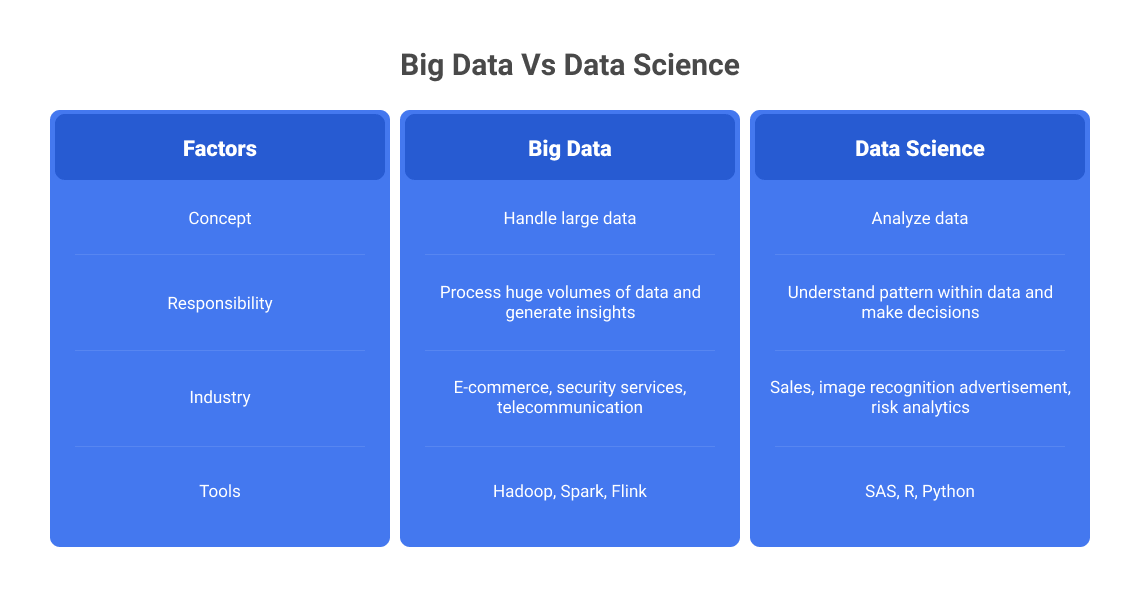
Most importantly, data science is a developmental augmentation of insights that manages enormous datasets with the assistance of software engineering advances. Many mistake Data science for AI which is totally wrong.
Despite the fact that AI is a subset of Data science, they are not the equivalent.
Also Read - 8 Python Libraries That A Data Scientist Must Know
Then again, the huge data sets manage to assort heterogeneous information from various sources and aren't accessible in the standard data sets. This only suggests to us that the information won't be classified into a table or outline or chart.
BIG DATA
- It’s a technique to collect, store, maintain, and process large amount of data
- It extracts vital and valuable information
- It tracks and discover complex data sets trends
- It makes data more vital and usable
- Hadoop, Spark, Flink, are the top technologies used in Big Data
- It is a subset of Data Science
- It enhance business purposes and customer satisfaction.
- It handle voluminous data.
DATA SCIENCE
- Data Science collect, process, analyze, and utilize data conceptually
- It use Computer Science, Applied Statistics, and Mathematics
- Works towards building data-dominant products
- Technologies include SAS, R, Python, etc
- It is a superset of Big Data
- It performs Data scrapping, cleaning, visualizing, and many more techniques.
- It broadly focus on the science of data for scientific purpose.
Final Words: Big Data vs Data Science Which is Better?
The current development pattern in the data industry business is expanding and it goes high like a sparkling sunbeam on demonstrating how the big data is setting down deep roots for the coming years to make ideal use of the collected data information.
Both of these fields will get greater and turn out to be considerably more significant with time. The interest for qualified experts in the two fields is developing at a quick movement, and they are turning into the most absolute blazing and most worthwhile fields to work in.
We found out about these two terms and the devices that are utilized to perform separate tasks. We likewise diagramed how Data Science is a greater set that contains Big Data as its subpart.
Besides, we figured out how more current businesses are using Big Data systematically. If you want to become a Big Data Analyst or Data Scientist, start looking for good courses now!
We are the top custom software development company in USA always involved in data industry work to make the best projects of mobile applications and software.


